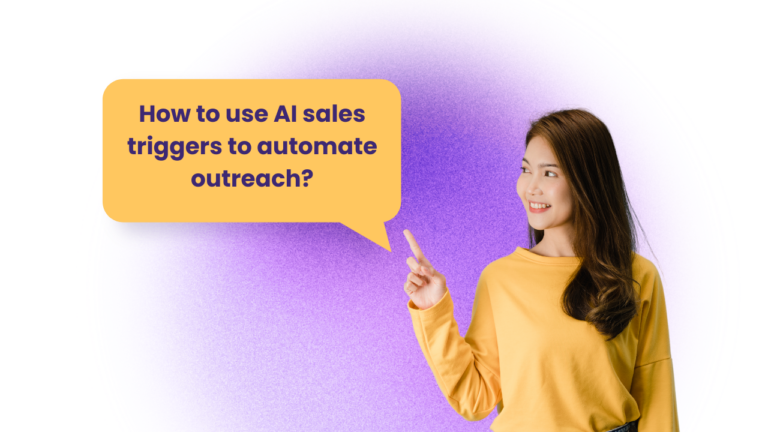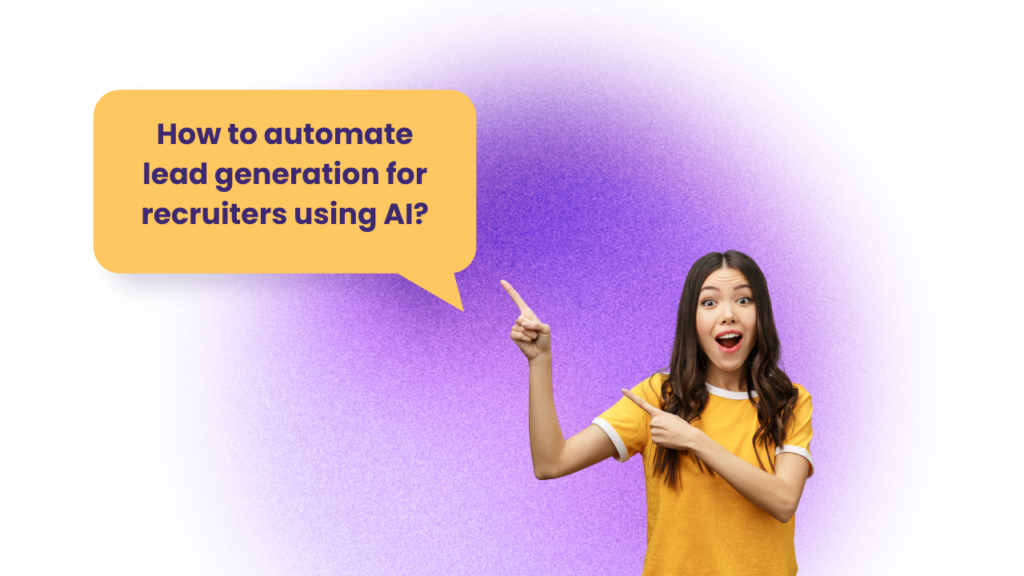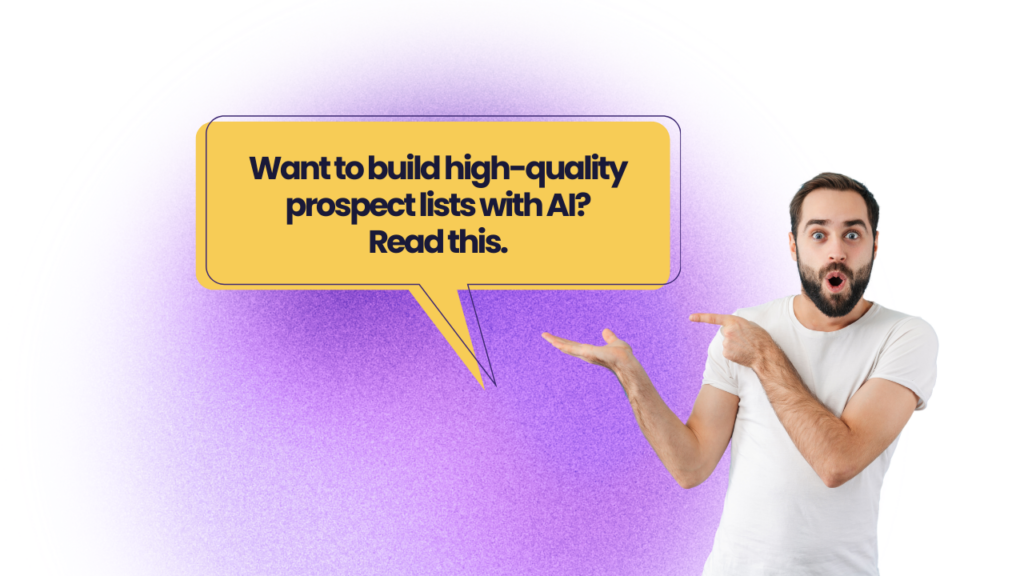As of 2024, the world of B2B outbound selling has transformed massively. Unlike the past where traditional methods were enough to reach out to your ideal customer, businesses today can no longer depend on a “spray-and-pray” method for their outbound campaigns.
Over the last 1.5 years or so, the sales paradigm has evolved, with data and AI taking center-stage across the spectrum.
One such gamechanger to emerge is the use of AI sales triggers, which have revolutionized the game completely. It’s still early, which is why not a lot of companies are using AI in their sales processes – thereby presenting an excellent opportunity for B2B businesses to automate their outbound sales using AI sales triggers.
But what are these AI sales triggers? And how can you really make use of them for your outbound campaigns?
In this article, we’ll dive deeper into the utility of AI sales triggers, learn how to use them to qualify prospects and then launch fully automated outbound campaigns for yourself.
So let’s get started.
Why use AI sales triggers in your outreach?
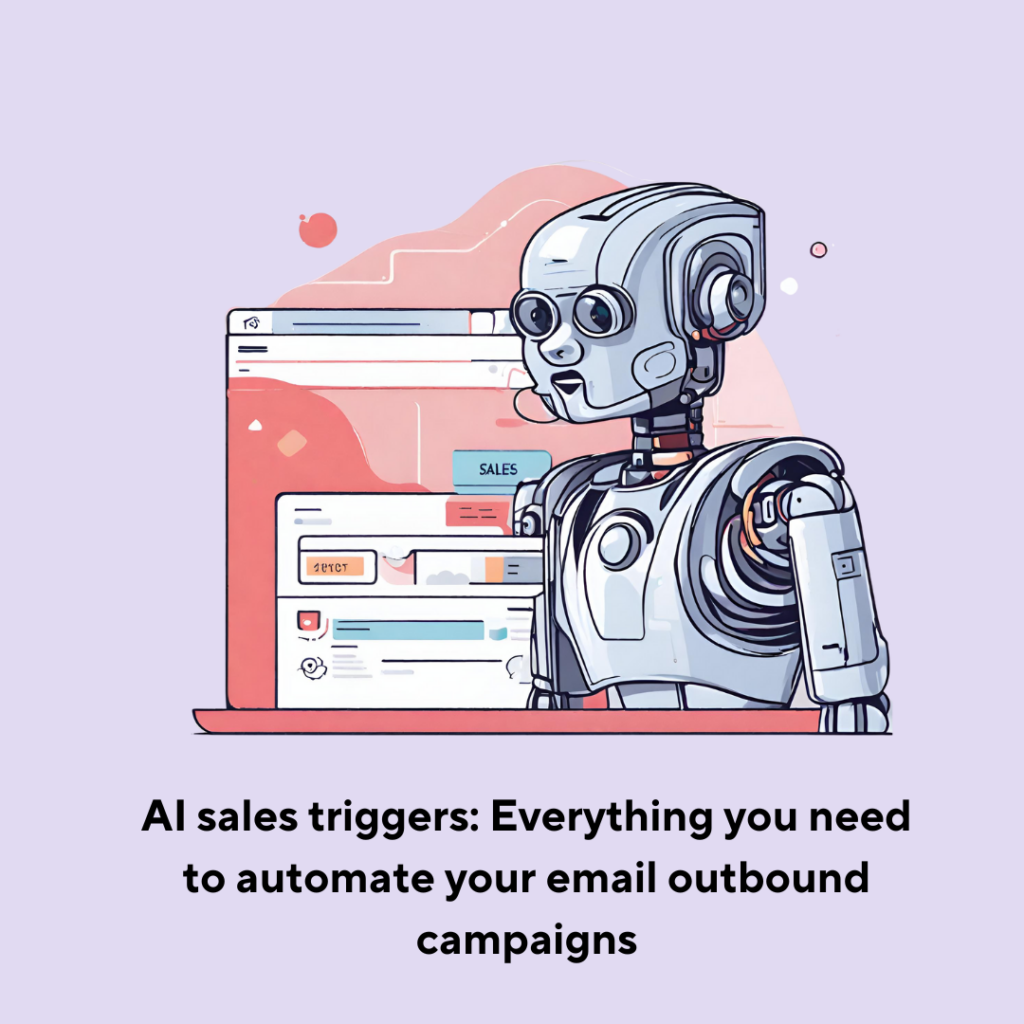
While it’s important to know how to use these triggers in your outreach, you must first understand their utility in your campaigns.
In simple terms, AI sales triggers represent specific events or changes within a business environment that signal an opportune moment for outreach.
These triggers, when identified and used alongside popular data enrichment tools can significantly enhance the effectiveness of your sales & marketing campaigns.
For example, if a customer visits your ‘Pricing’ page but doesn’t go ahead with a purchase, you could use AI sales triggers that can activate a follow-up email or SMS for conversion.
Using AI sales triggers for cold outreach: Step-by-step
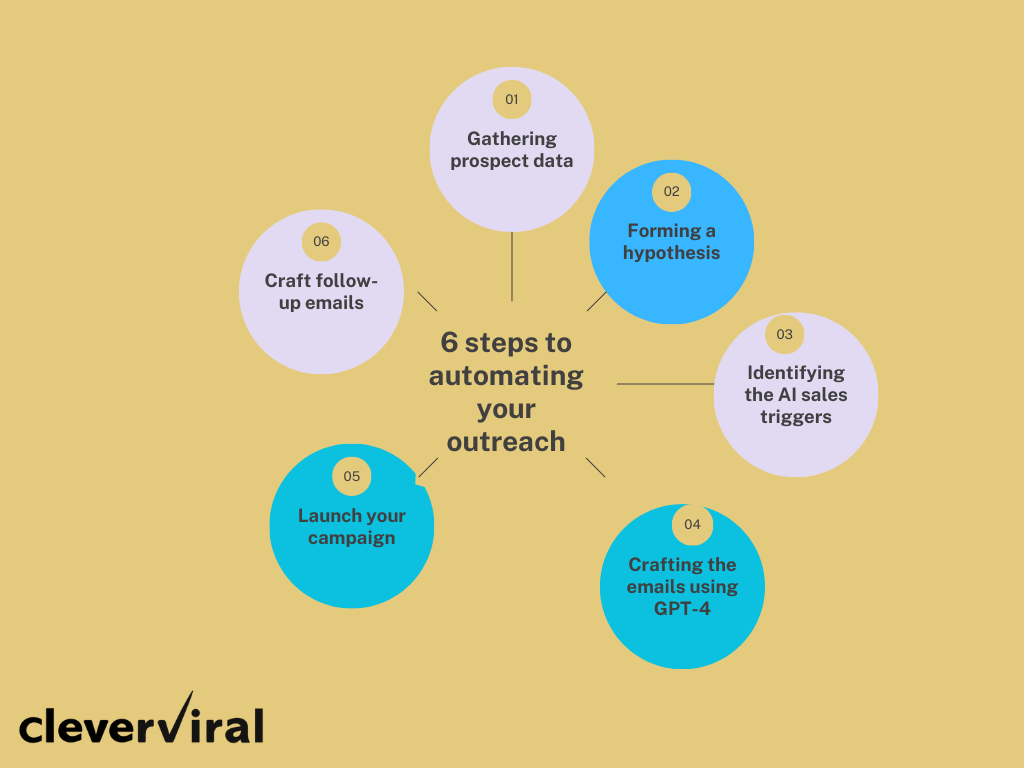
Automating your outreach campaigns with AI sales triggers is quite easy. Taking the example of a customer support tech or services company, the focus will be on personalizing the outreach emails using data scraping & qualification.
To help us out with this, we’ll be using Clay AI’s personalized data automation capabilities. A growing tool of choice for B2B sales teams, Clay allows users to personalize their outreach by using a combination of 50+ data providers, AI and real-time data scraping on a single platform. If you are a beginner and find Clay expensive for your budget, please remember that most such triggers can also be built using a data scrapper and Google Sheets for a cheaper cost.
That being said, if you have the resources to use Clay, you can leverage it to qualify prospects based on certain criteria and then use GPT-4 to craft personalized emails at scale.
Given below is a stepwise breakdown of how to automate outreach on sales triggers using Clay AI:
Step 1: Gathering required data
The process of using AI sales triggers for outreach starts off with gathering the required prospect data, which will then be used to qualify leads which match our ICP and have an intent to buy. To understand this better, we’ll take the example of a customer support tech company and how it goes about automating their outreach.
As a customer support business you may find it valuable to gather technology data of prospects from their website. Usually, all websites have certain publicly available information of what tools they use on the front end.
Things like their CRM information, website builder, chatbot, check-out infrastructure, marketing software etc. is collected and made available by tools like BuiltWith or Apollo.
You can also use tools like Hunter.io or Leadfeeder to scrape this information and build a robust database with a clear understanding of your target market.
Step 2: Forming a hypothesis
Once the data is collected, the next step is to form hypotheses based on this information. For example, you might hypothesize that companies with a new product being launched are more likely to need enhanced customer support.
These hypotheses will guide the application of AI sales triggers, ensuring that your outreach isn’t just data-driven but also strategically aligned with the prospect’s needs.
Step 3: Identifying the sales triggers
After forming the hypothesis, we go a step ahead and outline a few more sales triggers to qualify the leads for our campaign. These sales triggers would then be used to downsize the prospect list on Clay and enrich it further.
Since we’re using the example of a customer support-related business, here are the 7 main AI sales triggers to help qualify prospective customers:
Trigger 1: New customer support lead
The first AI sales trigger involves detecting new leadership roles within the customer support teams of target companies.
Using Clay’s ‘Find People Enrichment’ feature, you can easily scour LinkedIn for recent appointments, focusing primarily on people who joined in the last 6 months.
This trigger allows for timely and relevant outreach to new decision-makers who may be more receptive to new ideas and solutions.
Trigger 2: Customer support team growth by percentage
Growth in a company’s customer support team is one of the most crucial AI sales triggers. Using Clay AI, you can easily analyze the percentage increase in team size and use it to tailor your outreach message.
For instance, identifying a significant increase in the support staff can be a cue to offer products or services that align with the company’s growing needs.
Trigger 3: New product launches
New product launches often create a need for additional support and resources. These kinds of AI sales triggers can be used to zero-in on support questions that often come with a new product launch.
Based on this information, businesses can tailor their outreach with an offer for support services that align with the new product’s requirements.
Trigger 4: No support tech on site
The absence of customer support tools can be yet another criteria to derive a sales trigger that powers your outreach. With Clay AI, you can simply check if your prospects have never used customer support technology before.
You can do this by using Clay AI’s integration with BuiltWith or Apollo’s technology search to look up their technology stack and check if your prospects have never used customer support technology before.
You could even compare this to the number of employees in the company & the time since when the company has been running.
Trigger 5: Using competitor support tech on site
Another sales trigger you can use is the presence of customer support-related tools like Zendesk, Freshdesk and JIRA Service Desk on the prospect’s website. To do this, you simply repeat the process with the BuiltWith integration as you did in the previous sales trigger.
You can then combine it with a problem statement and feature, depending on which of the aforementioned tools they might be using. Leveraging competitor’s technology data for the AI sales triggers can help you adopt a more strategic approach when offering an alternative or complementary solution.
Trigger 6: Hiring for customer support roles
A surge in hiring for customer support roles is another significant sales trigger. This indicates a company’s intent to enhance its support capabilities, presenting an ideal opportunity for outreach with relevant solutions. You can use the Google + Clay AI integration to look up if a prospect is hiring for customer support roles in their organization.
By using this criteria for your sales trigger, you can easily deduce the tasks mentioned in the company’s job description. And then, based on the information gathered, pitch them your tool or service as an alternative.
Trigger 7: Having a generic support email
Companies usually have a generic support email to redirect queries from users or for troubleshooting purposes. In most cases, such businesses also use some kind of customer support solution to manage those queries.
But there might be instances where the prospect might not be using such a solution for managing their support emails. You can simply run a prompt on Clay, asking it to detect companies with such emails, and apply either of the two conditions.
Based on the response, you can then figure out potential gaps in their customer support systems & offer an alternative solution.
Step 4: Crafting personalized emails with GPT-4
Once you’ve qualified the leads in Clay, you can easily craft personalized emails for them using the GPT-4 integration. To do this, you simply need to choose the ‘Complete Prompt’ option and add your OpenAI key before proceeding further.
By combining data from different columns (job title, name or LinkedIn profiles), you can craft an entire, fully-personalized email sequence for prospects that can help you start new sales conversations.
When prompting GPT-4 to generate email copy, make sure to include all relevant details and criteria that you want your email copy to follow. It’s important to ensure that you aren’t leaving out anything and using as simple language as possible.
Here’s a quick walkthrough of how to use ChatGPT & Clay to craft highly personalized emails using AI:

Step 5: Creating your email campaign
Once the leads have been qualified using the above AI sales triggers and the emails created, it’s time to create an outbound campaign based on the finalized list of customers.
To do this, you can integrate Clay with your email sending tool and start your outreach in just a few easy steps. Alternatively, you can also download the Google/Excel sheet with the AI-generated copy & upload it as a CSV to the cold email software.
Step 6: Follow-up emails
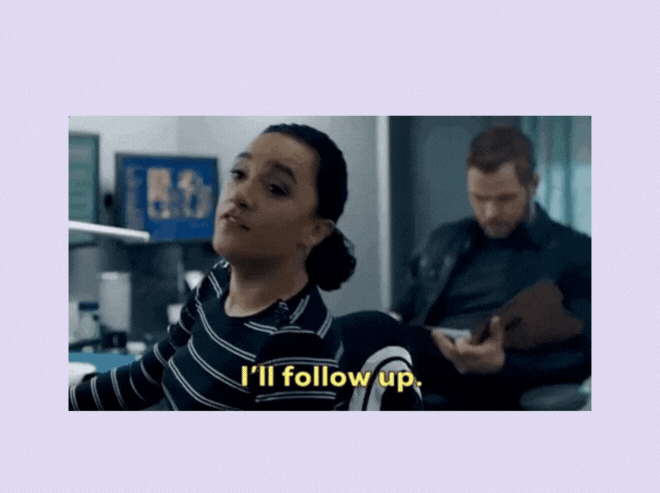
The final step involves automating the follow-up emails. Similar to the earlier steps, you can easily use Clay to come up with follow-up emails for your campaigns. All you need to do is ingest the prospect’s company description and then say something about their customer support.
Automating this step ensures persistent and consistent engagement with prospects, increasing the chances of converting leads into customers.
Benefits of Using AI Sales Triggers for Outreach Automation
Deciding to automate outreach on sales triggers can help you develop a more streamlined sales funnel that brings in a steady stream of new, potential customers into your pipeline. Since most of these leads are high-quality in nature, you can focus on optimizing your work efforts, explore new outreach angles or offers, and also save more time than usual.
With growing revenue & business performance being key goals, here are some key benefits of automating your outreach on sales triggers:
- Enhanced efficiency: Using AI sales triggers can significantly boost the efficiency of your sales process. By automating routine tasks, you can concentrate on more strategic aspects.
As per a study by McKinsey, about 30% of sales tasks can be automated, freeing up more time to manage organizational processes.
- Improved lead generation: AI tools have been proven to significantly increase the frequency of lead generation, intelligently identifying and targeting potential customers based on their behavior and interactions across touchpoints.
A key advantage of AI is its ability to analyze large datasets to uncover patterns and preferences, which can then be used to personalize outreach efforts. This leads to more effective lead generation, as AI-driven strategies are tailored to the specific pain points & challenges of potential customers.
- Data-driven decision making & personalization: AI sales triggers can help you personalize your outreach by processing and analyzing vast amounts of sales-related data to extract actionable insights & identify patterns essential for making better, more data-backed decisions.
Research has shown that over 73% sales professionals find AI helpful in pulling insights from data they otherwise won’t find — numbers that underscore the role of AI in enhancing accuracy of sales predictions as well as the degree of personalization in customer interactions.
- Better customer experience: AI sales triggers can be useful in personalizing your customer experience, analyzing large troves of data for recurring behaviors and preferences – eventually using it to customize your offer and messaging.
There are several platforms in the market that offer customer experience optimization using these sales triggers.
Scale Your Outbound Engine with AI Sales Triggers & Automation
So this playbook is everything you need to automate your outreach based on AI sales triggers. By following the logic described in the article, you can create similar use cases to qualify leads, craft personalized emails and launch your AI-powered outbound campaigns.
Now you can do this yourself, but with so many tools and strategies involved, it’s always a better idea to outsource the grunt work. This is exactly where Cleverviral’s AI-powered outreach services come into the picture.
If you’re looking to automate outreach based on sales triggers & want to scale it to the next level, drop us a line on [email protected] or simply fill out the contact form.
Until then, happy prospecting!!
Frequently Asked Questions
How to use AI to boost sales?
In addition to this, you can also use AI sales triggers to qualify the prospects based on specific criteria and receive better, more targeted results.
What are triggers in sales?
AI sales triggers, on the other hand, are specific algorithms or events (inside a software tool) that automatically identify key events or behaviors indicating a potential sales opportunity.
